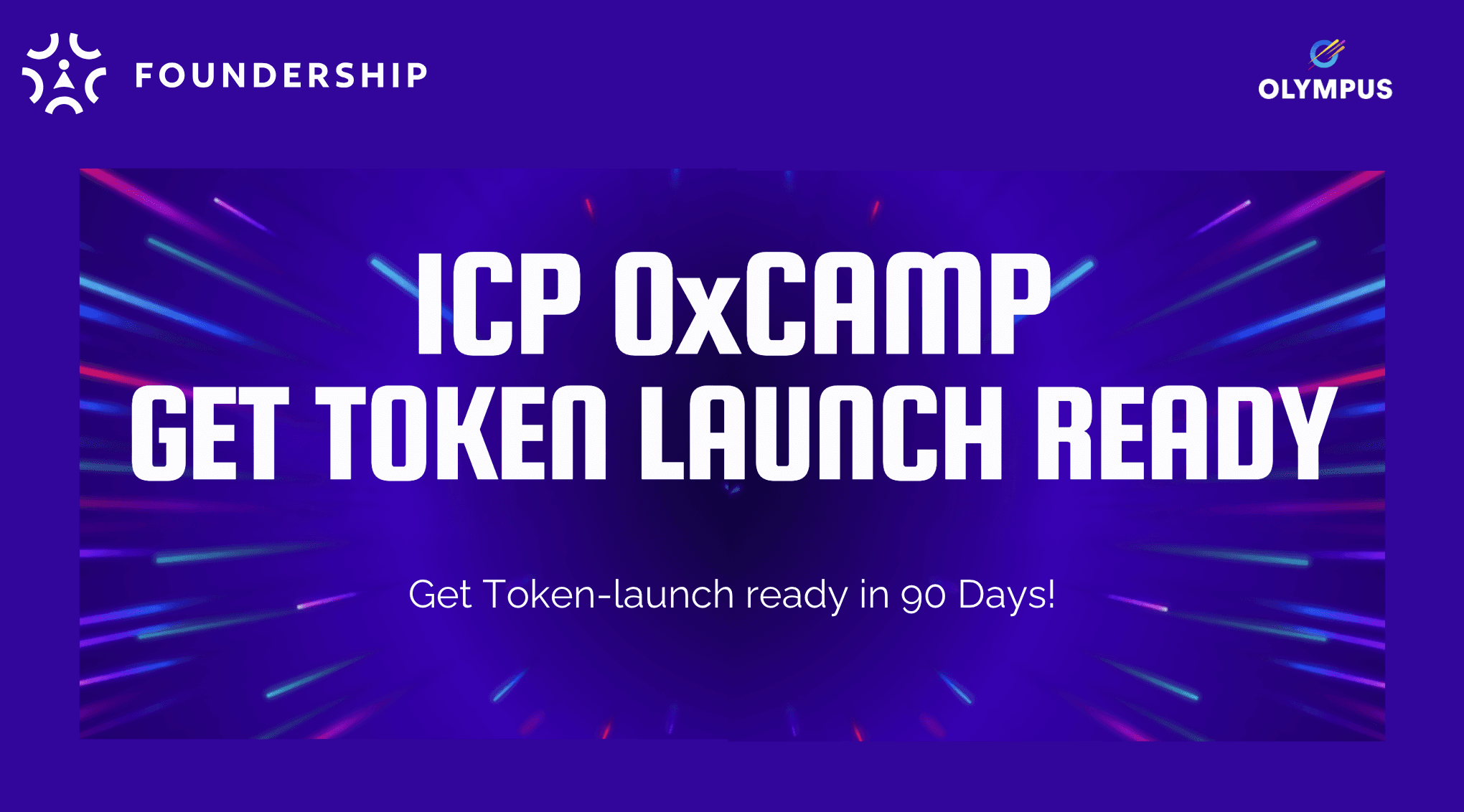
Investors have sat through hundreds of pitches.
Every other web3 entrepreneur they meet claims to have a ‘disruptive’ product.
But you’ve worked really hard on your idea. You have a great vision for your startup and the people.
And you get only a few minutes to prove your point.
How will you convince them? How will you take them on an emotional journey, back your claims with logic, and look like a promising business opportunity to invest in?
In such a case, having the right pitch deck can be more helpful than you think!
Why Is Your Pitch Deck Important?
Firstly, not all investors whom you will be pitching to are going to have a web3 background.
To give them a mental model about your product, plan, and how it will impact users, your pitch deck will play a huge role.
Secondly, even if the investors are seasoned web3 players, they still need something to visually keep track of as you deliver your pitch.
They have an extremely short attention span, so you need something to hook them.
Besides this, your pitch deck is essential for -
Keeping the investors engaged in the presentation.
Communicating your ideas visually (besides verbally) so they understand them better.
Showing your product in action.
Showing a glimpse of your brand by presenting the deck your way.
12 Things To Include In Your Pitch Deck
Investors have really short attention spans. And when they watch or listen to pitches all day round, they naturally turn blind towards things that don’t matter to them.
Here are essential things that’ll take you directly to the point and cover everything they need to know about the opportunity.
You should never miss these in your investor pitch deck.
1. The What & The Why?
In the very first slide, you need to clarify what is your startup about, and more than that, the ‘WHY’ of its existence.
Everything begins with a purpose.
Unless and until there is no strong reason behind your existence, you will be looked at as yet another entrepreneur who simply wants to make it big in the tech space.
Having a personal ambition is great. But the world does not care about what you want. They care about what you can do for them.
And investors want to hear this from you.
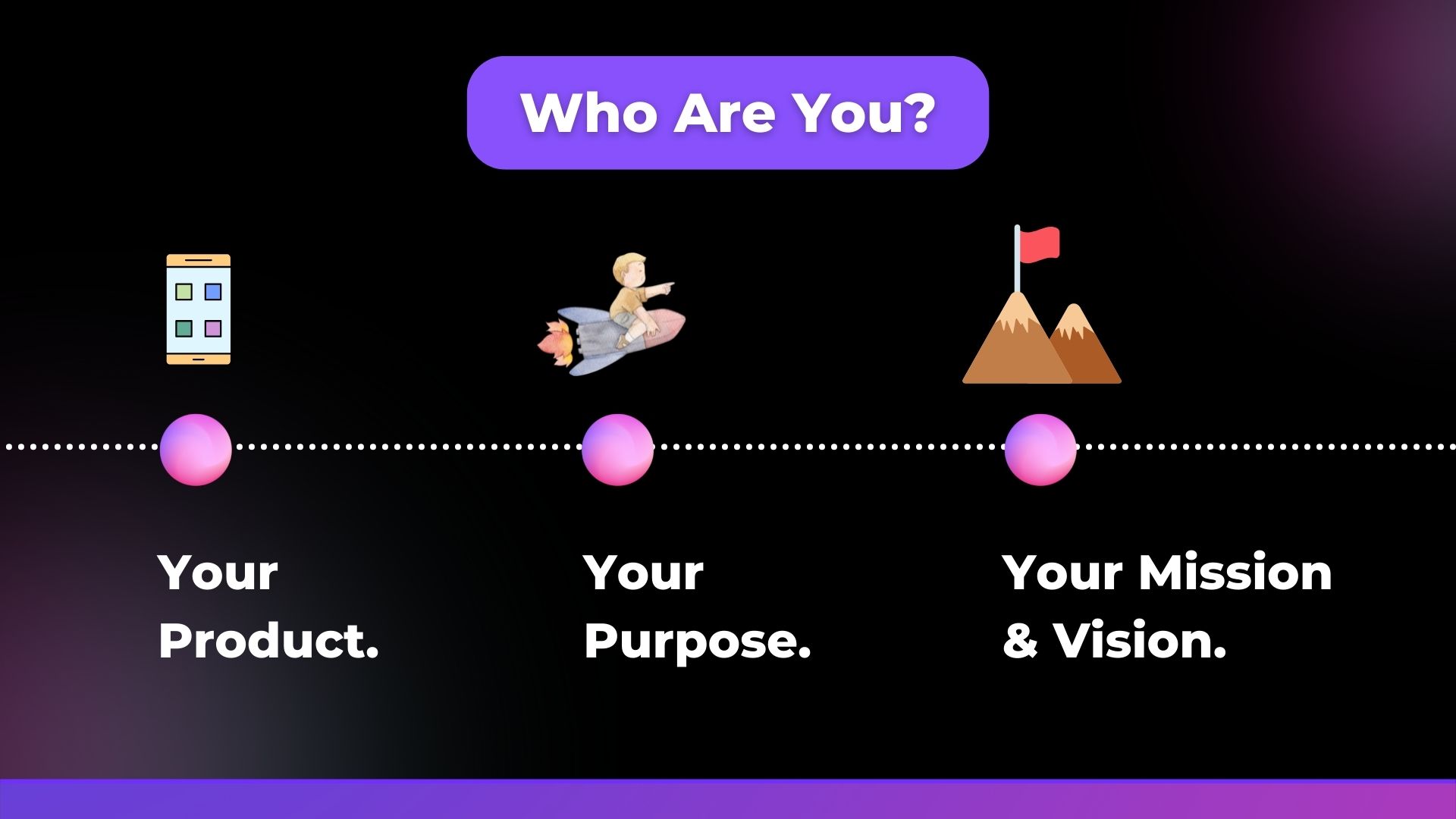
Thus, Include -
What’s your product about?
Purpose of your company beyond business aspirations.
Your vision for the industry & your mission for the people. (I know it’s cliche but it’s necessary.)
2. How Painful Is The Pain?
After your first slide, investors have an idea of what you do, why you exist, etc.
But it was just an introduction. They are not clear enough about what exactly the pain is that you are trying to relieve.
This is the time you put your finger on the problem that exists out there, and show how severe it is. A little bit of agitation will work.
This will reassure them why your solution is important.
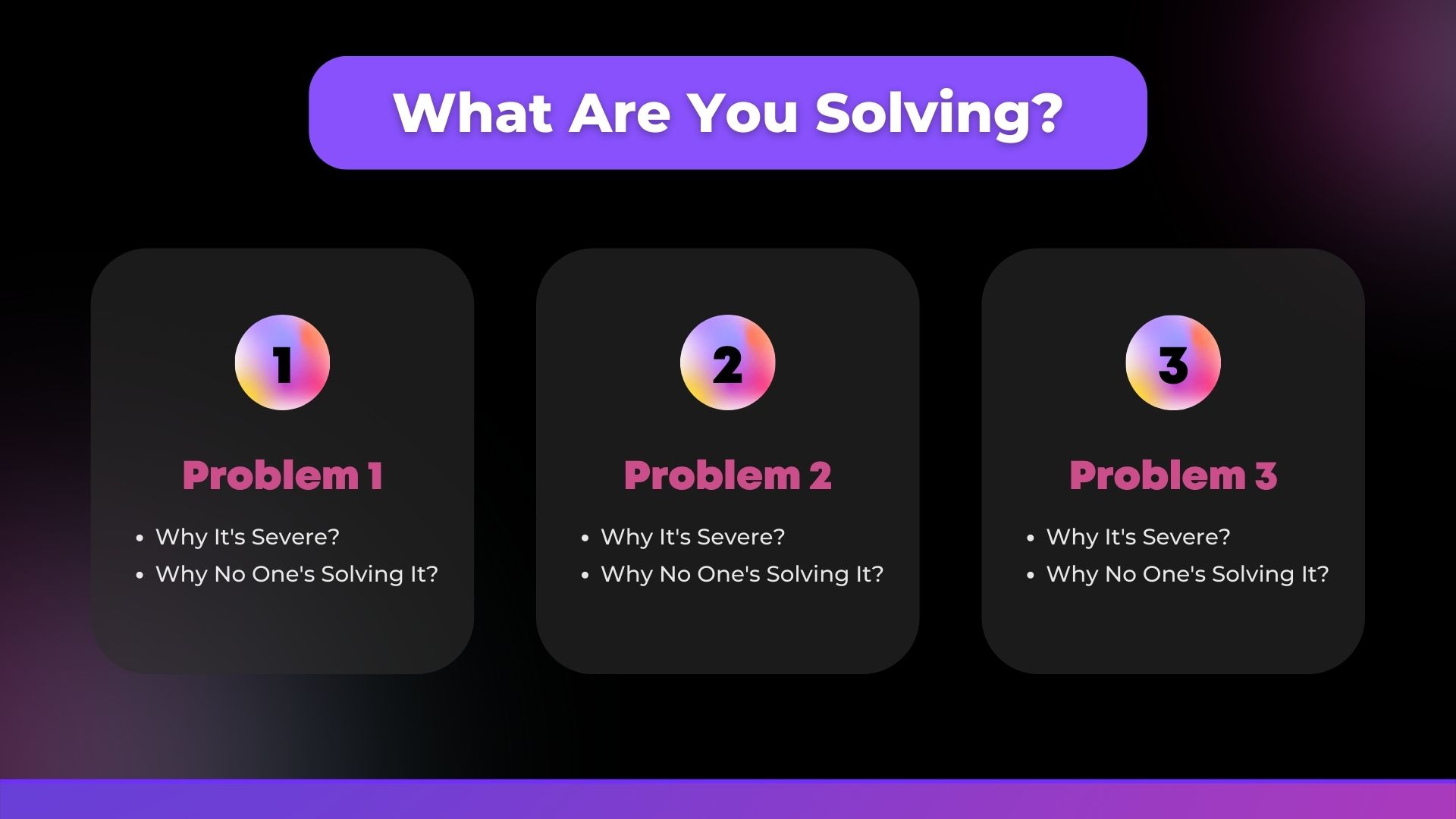
Thus, Include -
Proof (screenshots of reviews, statistics, interviews, etc.) of how bothersome the problem is.
How you identified it? (show that you’re unbiased)
Why not many companies are solving it effectively?
3. Your Unique Solution
Now you have intensified the pain enough. Investors know, there is a need for a remedy.
This is the time to step in with your solution.
Showcase how your solution is exactly something that your target customers would need (or want).
At this stage, investors may not be keen to know about the technicalities or features of your solution. But make sure to highlight things your customers will be able to accomplish using your product and how it will sustain in the market.

Thus, Include -
The story behind how you arrived at the solution.
A quick video demo showing your product in action.
Explaining its value proposition, and ability to scale & sustain in the long run.
4. How’ll You Make Money?
Investors love to know this!
Your solution is all right. But it will still not make sense to them if they don’t understand your business model.
Also, your ticket size, pricing model, profitability, etc. will play a huge role in identifying how the product will survive in the market.
This is one of the most important parts for an investor while listening to a pitch.
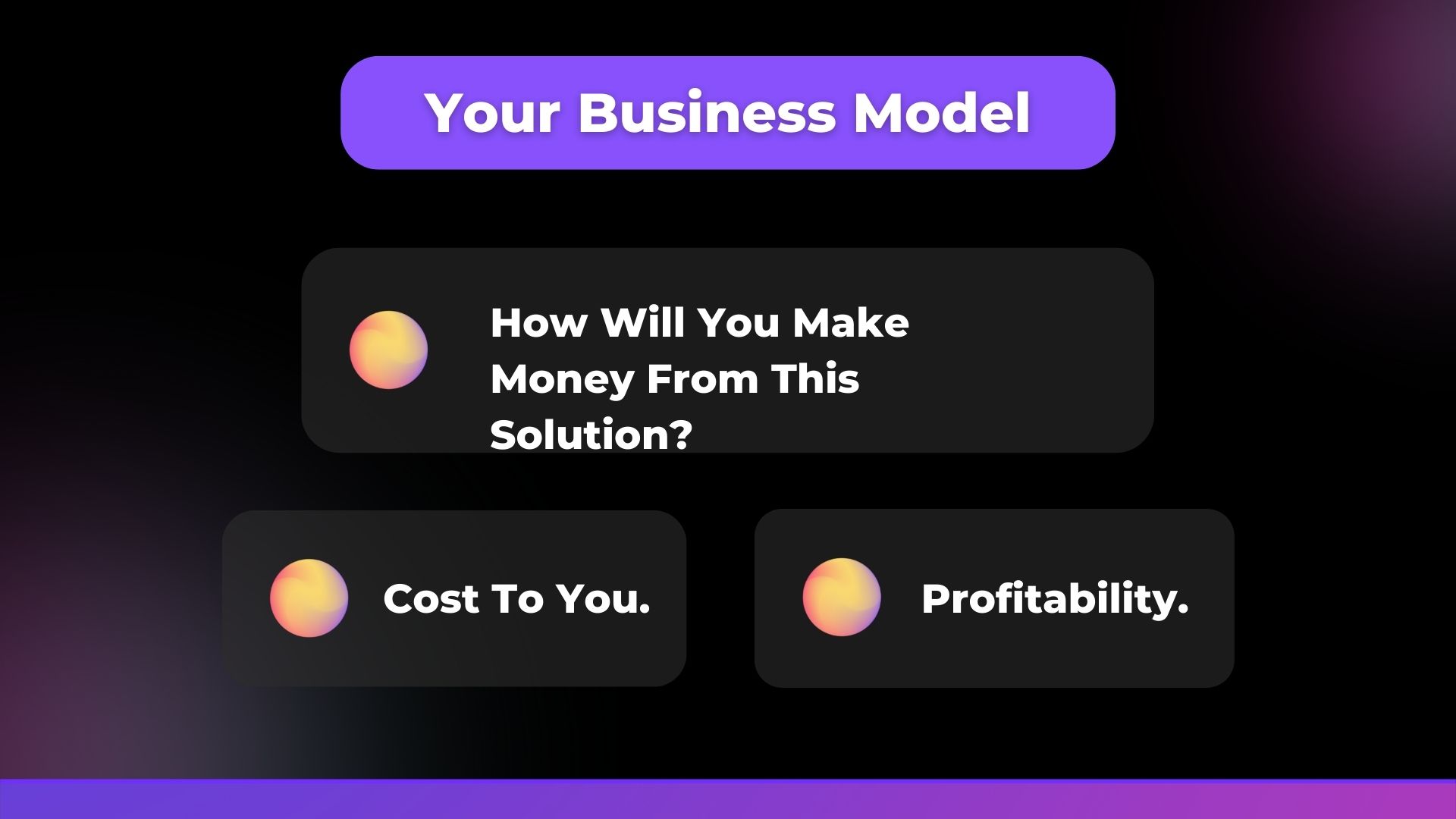
Thus, Include -
Ways you are going to monetize your product/service (or even brand in general) & how much will it cost the end users.
How much will it cost to you for making the product ready, maintaining it, and of course acquiring the customers?
How much is the profit potential?
5. Why Now Is The Time?
A lot of excellent solutions did not work simply because they were released at the wrong time.
One thing investors will always be skeptical about, especially in the case of web3 startups is - is this the right time?
Web3 still being a new terrain may not be a tried & tested domain for many investors out there.
Thus, it's your responsibility to clearly explain why your decentralized solution needs to reach people RIGHT NOW.
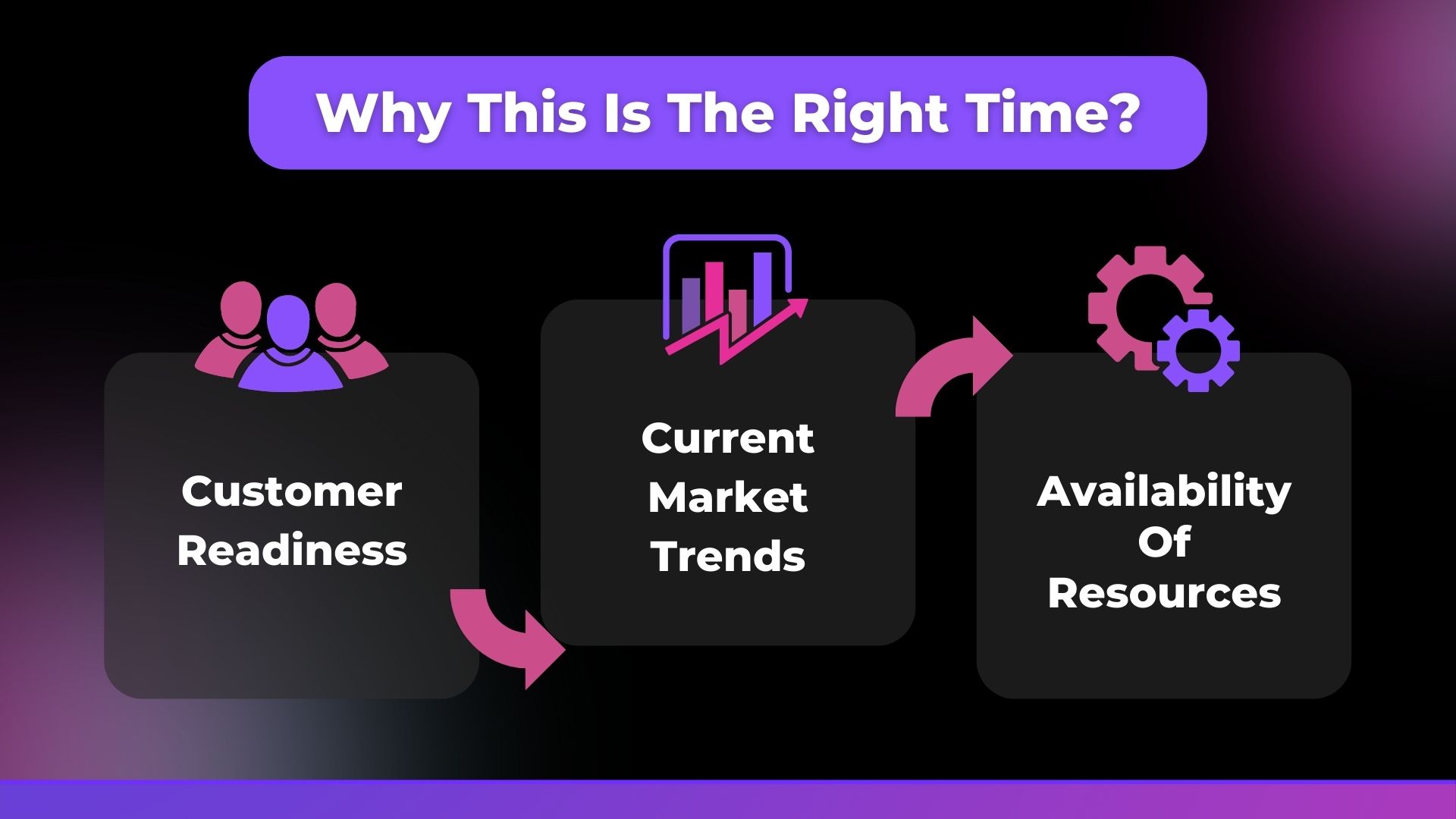
Thus, Include -
How people are ready & capable enough to adapt to your solution? (current market trends)
How necessary support is already available in the market? (complementary tools)
Why pushing it now (and not later) will make a difference?
6. People & The Market
Ok, investors know how severe the problem is & they are also impressed by your solution.
But now they are interested in how big the opportunity really is. Are there enough people who care about the solution? Is the market size big enough to make decent returns?
So now talk about where the solution is meant to go. People & the market!
This is where investors will identify if the investment is really worth it.
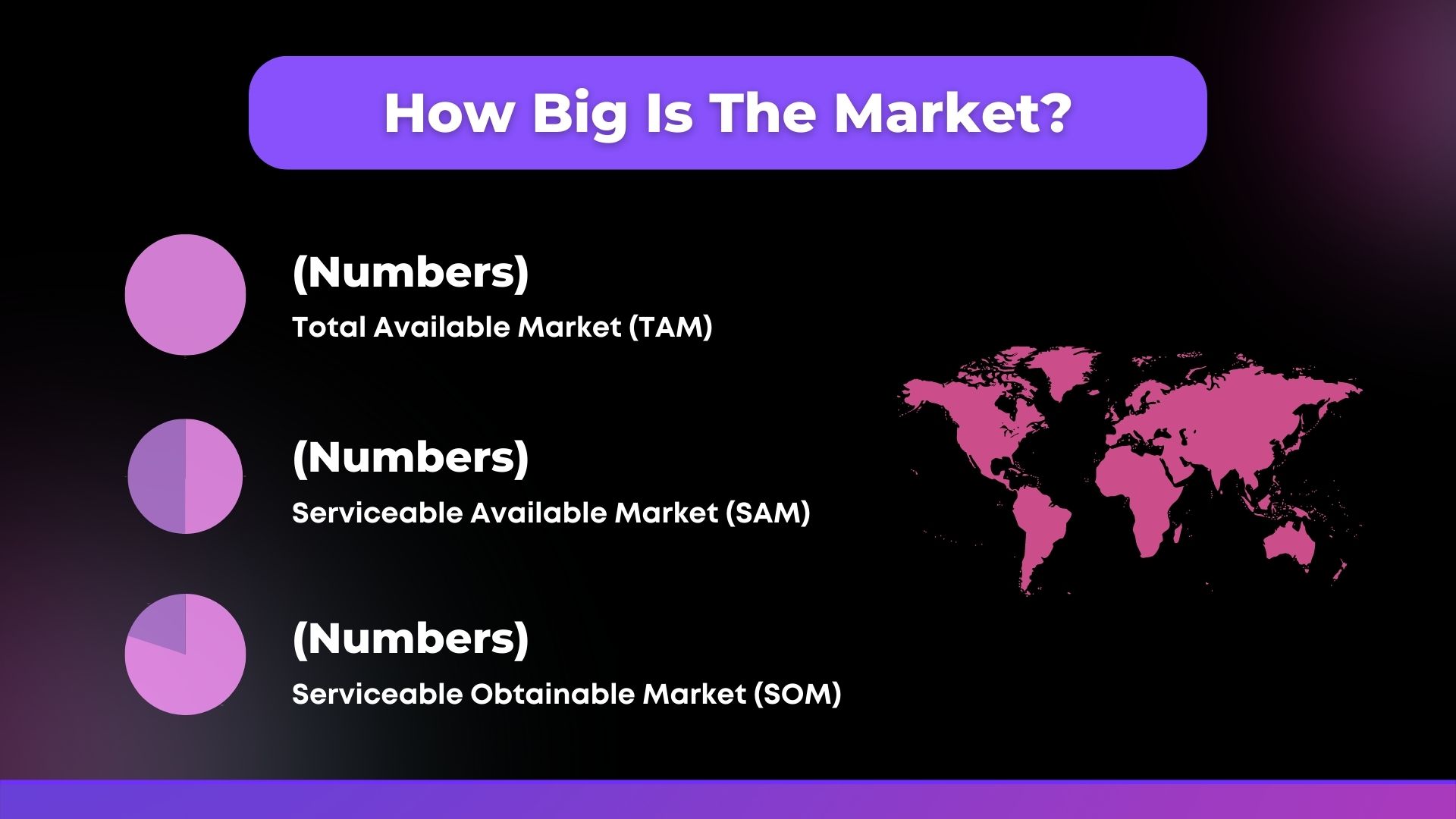
Thus, Include -
How big is the total market? (based on demand)
How much are you currently serving? (if you are already out)
How much can you serve realistically? (your maximum capacity)
7. Your Plan To Sell
Understanding the market without knowing your marketing plan is of no use to the investors.
The market looks big enough. Looks like a lot of money can be made.
But how will you bring in new users? How will you establish your brand? How will you scale?
You have to gain the investors’ trust in that.
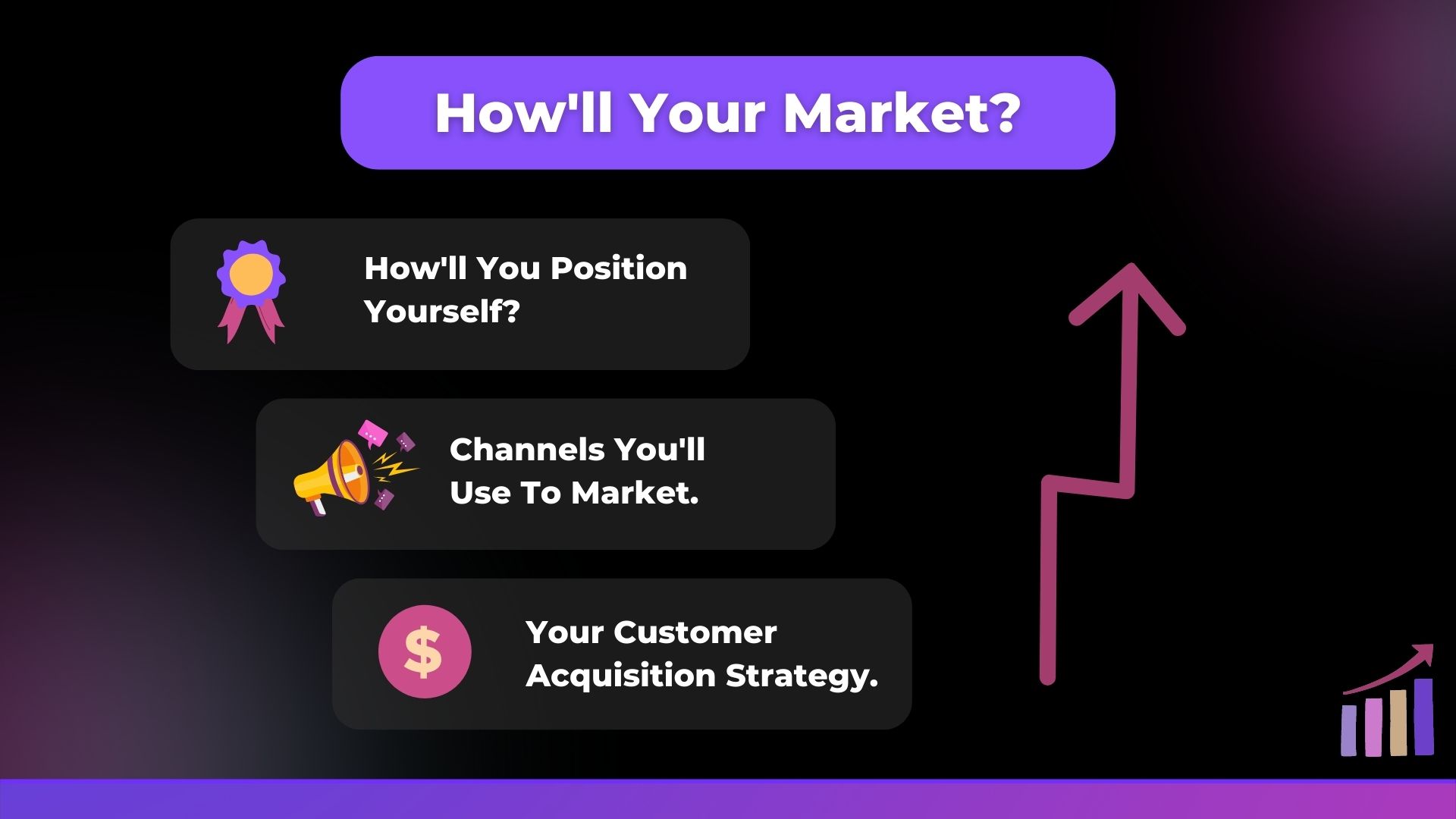
Thus, Include -
How will you position yourself in the market?
Channels that you will use to reach your target audience.
How will you acquire customers at scale?
8. Building Your Tribe
More than blockchain or some technology, web3 is all about communities!
Marketing is necessary to position yourself & acquire new customers, but it is the community that will truly establish you as a brand in the web3 ecosystem.
Thus, sharing about how you will build your tribe & how you’ll grow it becomes mandatory in a web3 investor pitch.
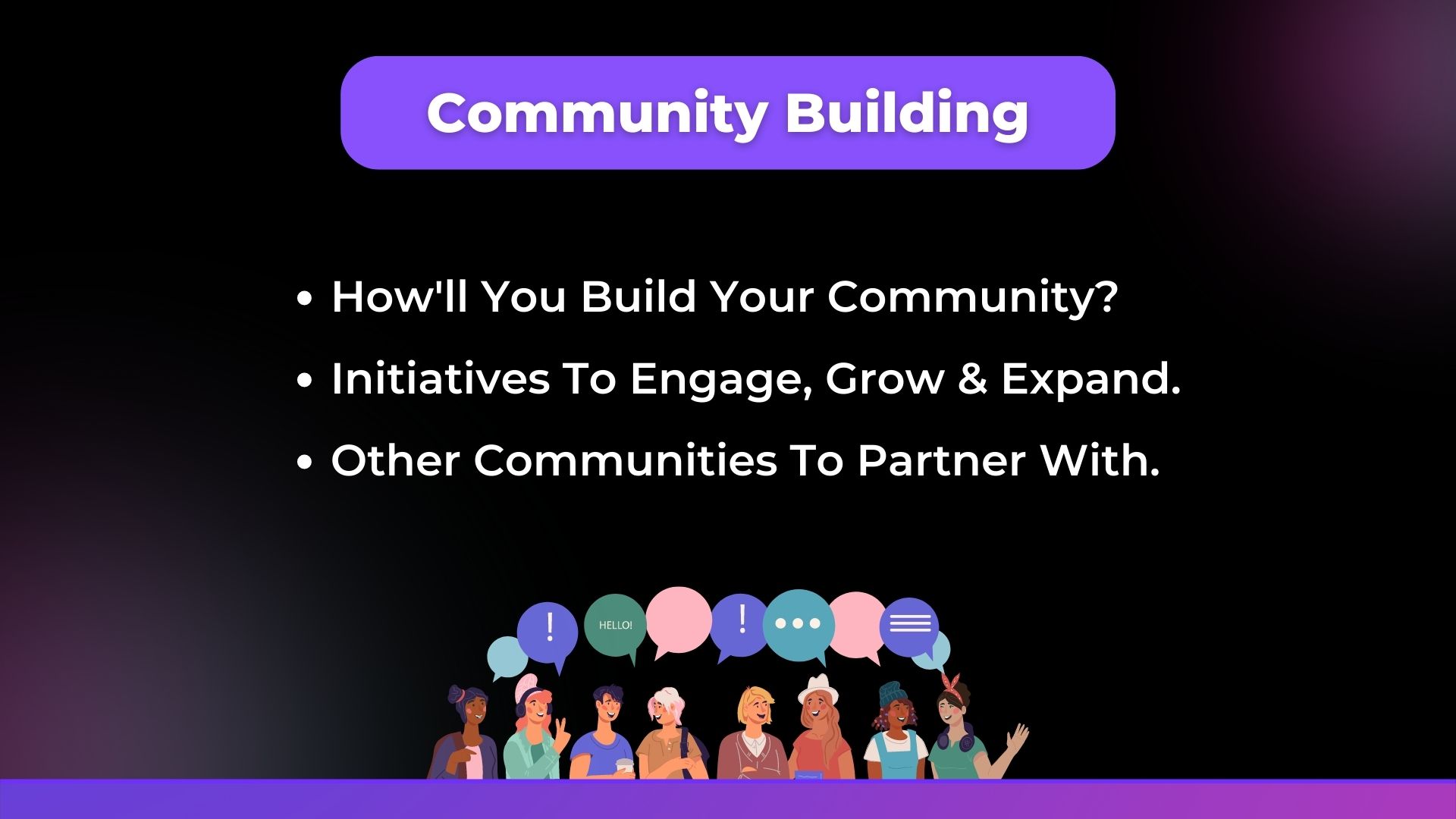
Thus, Include -
How will you build your community & where will you host it?
How will you keep them engaged and eventually grow & expand it?
What other relevant communities you can partner up with?
9. Compete & Collaborate
Investors will always cross-question you based on your competition.
Comparison has always been a part of our life, be it during school time or in entrepreneurship. And ignoring it at this stage is not the wise thing to do.
The best bet is to study the competitors to their core and find a way to not only differentiate ourselves from them but also leverage them by finding collaboration opportunities for our success.
This is a must-have in your pitch deck.
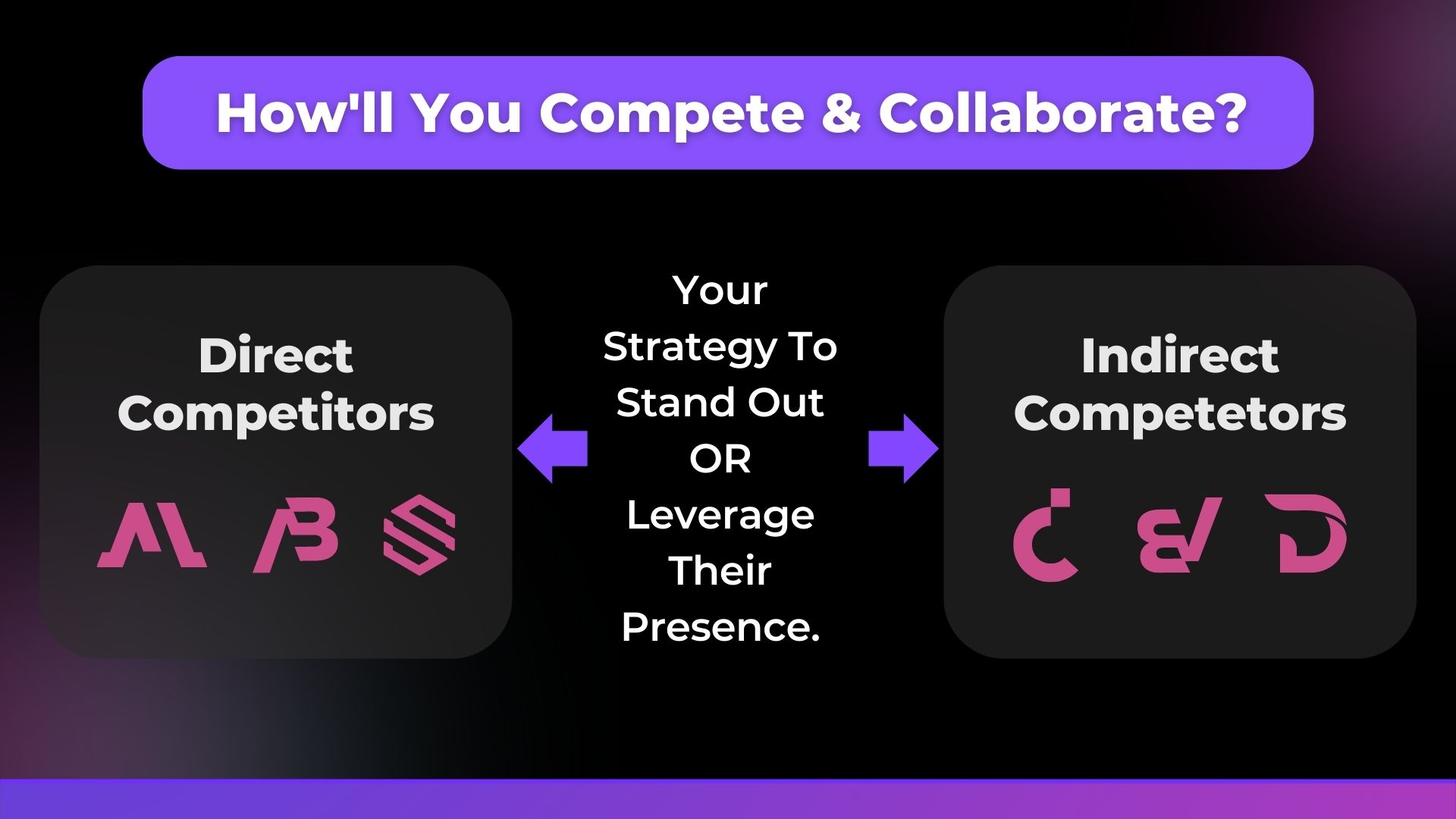
Thus, Include -
Who are your direct & indirect competitors?
What you are doing that they are not? (and how differently)
Your strategy to collaborate & leverage their existence instead of clashing with them.
10. Team - Your Human Possibility!
Time to show some human side of your startup.
At last, a company is as good as the people working in the company.
Investors know the value of the right people and you have to make an attempt to explain why they aren’t betting on the wrong ones.
A wise investor may not always put their money into the right idea, but always on the right people.
Win their trust by showing how stronger folks you have assembled.

Thus, Include -
Stories of talent & expertise possessed by your team.
Your combined experience.
How you are planning to scale up your team in the future.
11. The Finances
By now, you have provided enough clarity about your product, company, team, and why your solution will work.
You have triggered them emotionally and intellectually.
But all things said & done, it all boils down to what you can give to your investors in return for their investment.
This is the only reason why investors will be listening to your entire pitch patiently.
For you, it’s a dream. For them, it's an investment opportunity.
Clearly defining your financial strategy at this stage will accelerate their decision-making (which they would have already made in their mind).
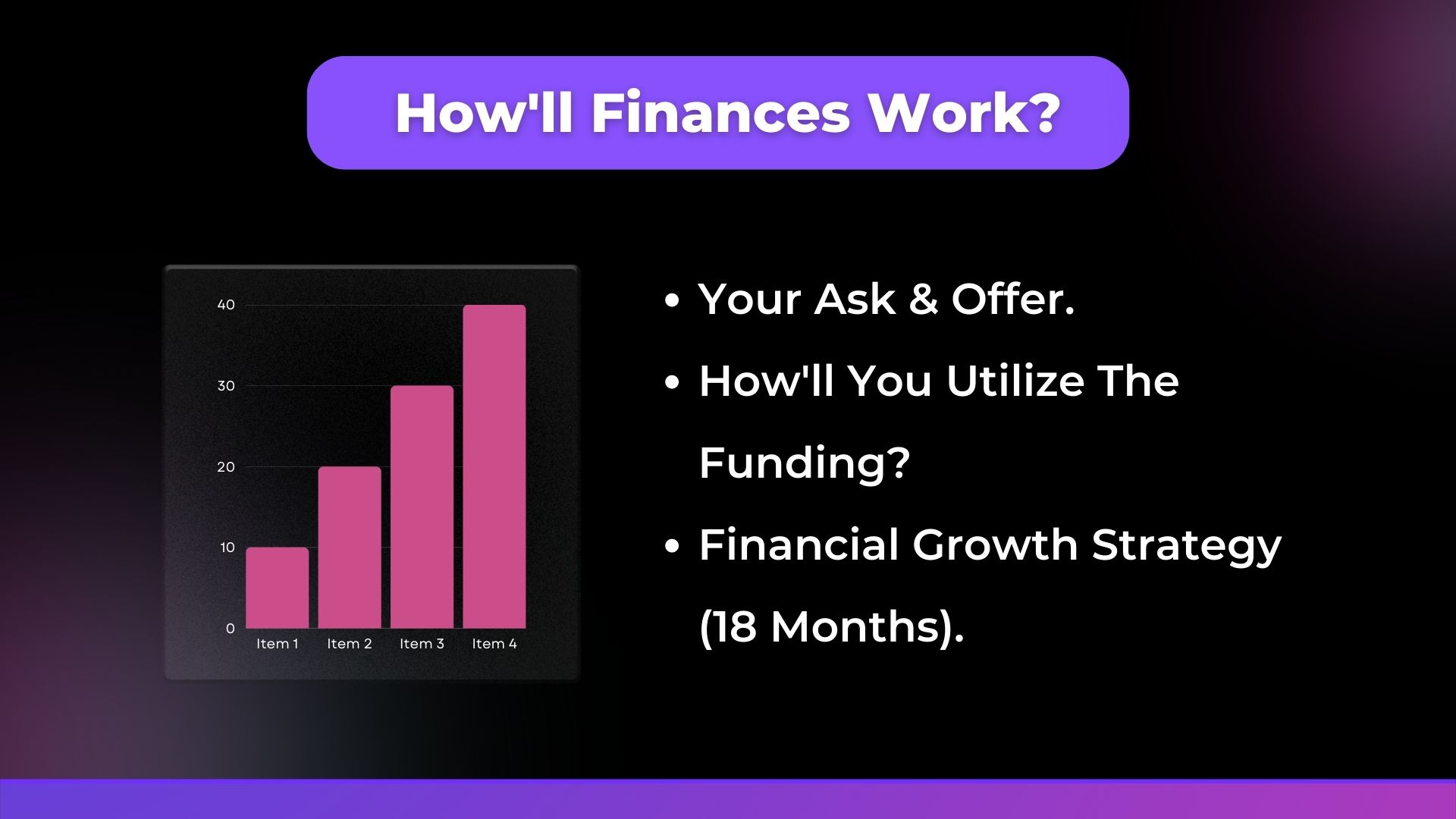
Thus, Include -
Your ask & offer.
How will you utilize the funding?
Your roadmap for financial growth. (Show your next 18 months' plan)
12. Frequently Asked Questions (FAQs)
Investors may still have some unanswered questions lingering in their minds.
So before they raise them, it’s best to answer them in the pitch deck itself.
We’ve listed down the Top 3 most asked questions during a pitch.
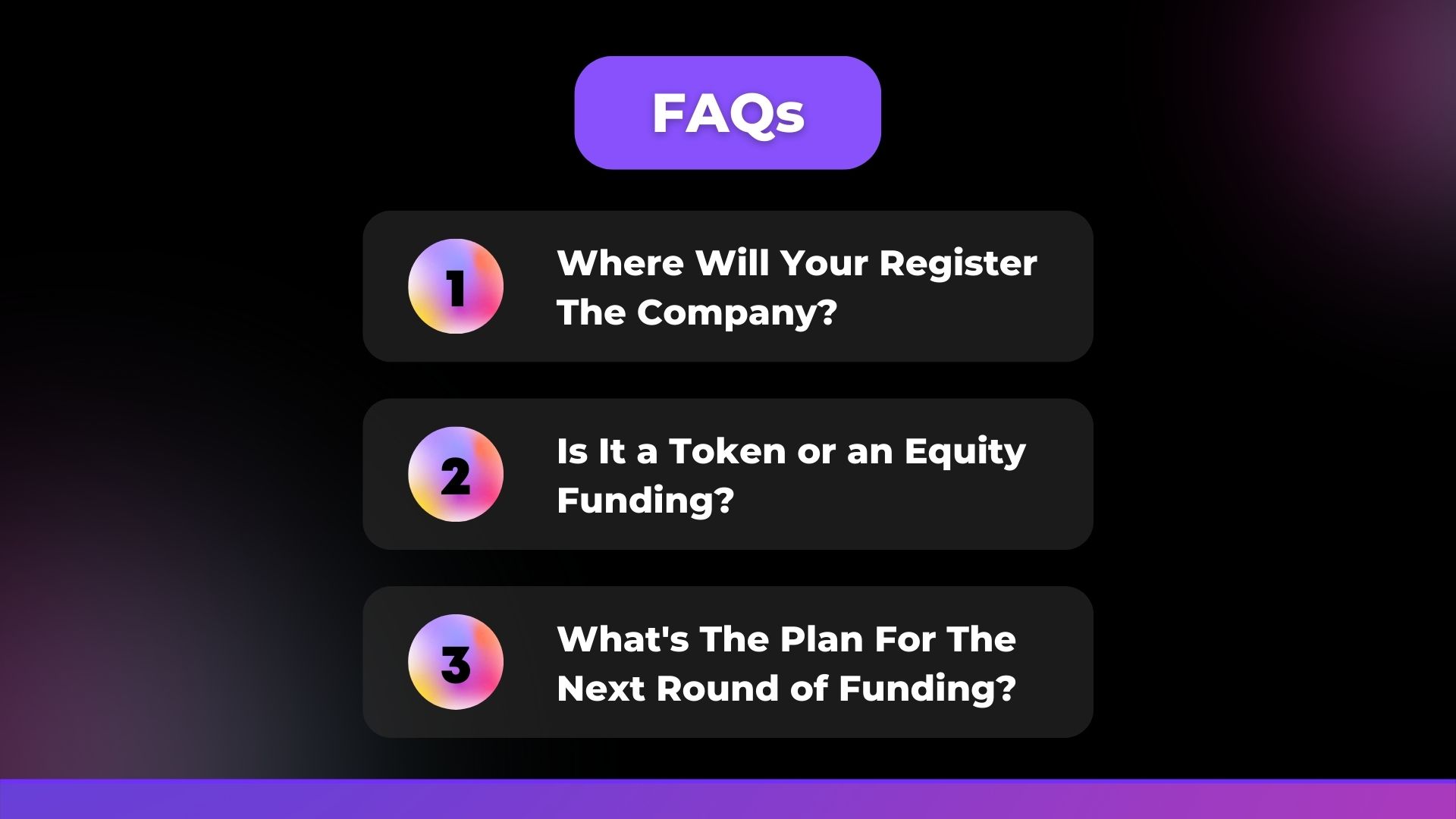
Top 3 FAQs To Include -
Where you will register the company?
Is it token or equity funding?
What’s the plan for the next round of funding?
4 Best Pitch Deck Practices
Pitch deck is not a document in itself.
It's a referral that you design to explain your point in a better way.
Keeping its purpose in mind, here are some best practices to follow while building it.
1. Keep It Visual
You are already going to verbally spit out words during the presentation. Then why are you making a pitch deck?
It’s simple. To have a visual representation of what you are trying to say.
Investors will remember what they SEE more than what they read or listen to.
Thus, don’t put too much text in your pitch deck & literally make it a script of your pitch.
Include images, graphs, charts, screenshots, videos, and even memes wherever necessary.
2. Tell Stories
What sets apart successful entrepreneurs from unsuccessful ones is the ability to tell stories.
Stating facts as facts are not engaging or interesting enough. Why not use stories to convey the message?
How severe is the problem you are trying to solve? Tell a story.
How effective is your product? Tell a story.
How talented is your team? Tell a story.
They will get the point quickly!
3. Show The Data
Ok, we can convey our message effectively through stories. We might have already hit their emotional chords by now.
But investors are highly logical people. They will not get convinced without the data.
Be it the identified problem, market size, your current users, ambitious sales goals, scalability of the product, etc. data is the only thing that’ll make it believable.
This data can be in the form of surveys, feedback, activity tracking, news reports, statistics, etc.
Just make sure to present it in the right context instead of simply throwing out the numbers to impress.
4. Keep It Simple
The reason why we are making a pitch deck is to simplify complex stuff.
There are things that can’t be explained verbally. Thus, we are presenting them visually.
So please make sure to keep the deck, the designs, your language & the flow simple enough that even an unrelated person will get the gist of it.
DO NOT try to complicate things in the name of creativity or sounding intelligent.
Confused investors will never give you their money.
Choose clarity over creativity.
Note - Keep your pitch deck to a maximum of 15 or 20 slides. Anything lengthier than that will only make the investors lose their interest.
Download the Editable Web3 Investor Pitch Deck Template for FREE


Final Words
The above things and practices are the foundations for building a persuasive pitch deck.
But still, there is no perfect pitch deck present in the web3 world.
What worked for some may not work for others.
The best thing you can do is to keep refining your deck as you gain insights by meeting new investors every time.
Keep knocking on the doors. You never know which one gets opened for you!
And if you are building in web3 and need help with coaching, capital, or community, do consider applying for our next 0xCamp.
It’s a context-based 3-week IVL & 1-day IRL incubation program meant for taking the web3 startups to the next orbit!
See you in the next post.
